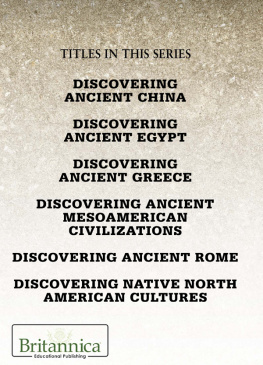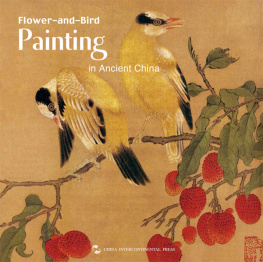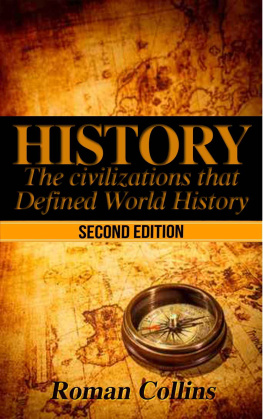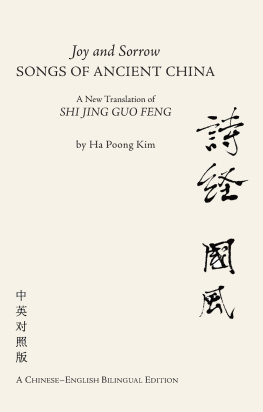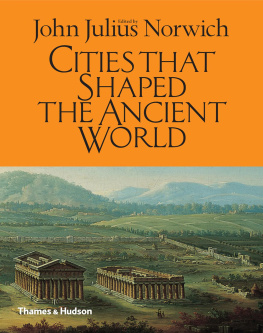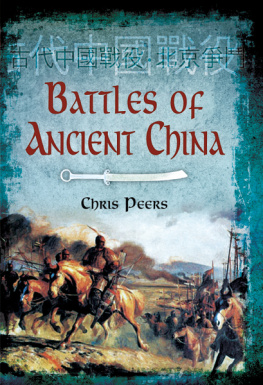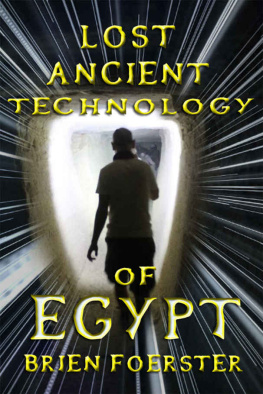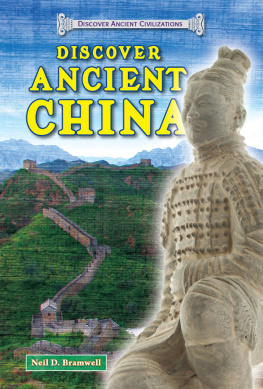30-SECOND
ANCIENT CHINA
The 50 most important achievements of a timeless civilization, each explained in half a minute
Editor
Yijie Zhuang
Contributors
Qin Cao
Beichen Chen
Wengcheong Lam
Siran Liu
Sai Ma
Peng Peng
Chao Tang
Li Zhang
Yijie Zhuang
Illustrations
Ivan Hissey

In the West, the story of Ancient China is less familiar to us than that of Ancient Egypt or Rome, but it is no less absorbing. This book takes you through the huge achievements of the early civilizations of China, so that you can dazzle your dinner-party guests with your knowledge of its Bronze Age glories.
30 Second Ancient China reveals the secrets of the Xia, Shang and Zhou dynasties, all explained clearly and without the clutter. Each entry is summarized in just 30 seconds using nothing more than two pages, 300 words and one picture. Leading scholars present an expert guide to everything from the ancient cities of the Zhou kings and the elaborate oracle-bone rituals to the exquisite bronze vessels that gave the age its name. Add topics dealing with everyday life in Ancient China, and succinct biographies of some intriguing figures and 30-Second Ancient China becomes the perfect introduction to one of the great ancient civilizations.
First published in Great Britain in 2015 by
Ivy Press
210 High Street, Lewes,
East Sussex BN7 2NS, U.K.
www.ivypress.co.uk
Copyright The Ivy Press Limited 2015
All rights reserved. No part of this publication may be reproduced or transmitted in any form by any means, electronic or mechanical, including photocopying, recording, or by any information storage-and-retrieval system, without written permission from the copyright holder.
British Library Cataloguing-in-Publication Data
A CIP catalogue record for this book is available from the British Library.
Print ISBN: 978-1-78240-270-1
EPUB ISBN: 978-1-78240-296-1
MOBI ISBN: 978-1-78240-297-8
PDF ISBN: 978-1-78240-298-5
This book was conceived, designed and produced by Ivy Press
210 High Street, Lewes,
East Sussex BN7 2NS, U.K.
www.ivypress.co.uk
Creative Director Peter Bridgewater
Publisher Susan Kelly
Editorial Director Tom Kitch
Art Director Michael Whitehead
Senior Project Editor Caroline Earle
Commissioning Editor Sophie Collins
Designer Ginny Zeal
Illustrator Ivan Hissey
Picture Researcher Sharon Dortenzio
Glossaries Text Andrew Kirk
Cover image: Shutterstock / Fotokon
Typeset in Section
Colour origination by Ivy Press Reprographics
Distributed worldwide (except North America) by Thames & Hudson Ltd., 181A High Holborn, London WC1V 7QX, United Kingdom
CONTENTS
INTRODUCTION
Yijie Zhuang
Students of ancient Chinese history and culture face a number of distinctive questions. Why and how did China, with its huge geographical landmass and multiple nations, remain united for thousands of years? Why is traditional Chinese architecture so different from that in other parts of the world? Why did a borrowed technology, metallurgy, play such a fundamental role in ancient Chinese societies, marking a departure from Western counterparts? Why did the population remain high throughout history? And most importantly, when did the concept of China, culturally and geographically, come into being?
Though fostered during Neolithic times, it was at the beginning of the Bronze Age that many of these characteristics were shaped and developed. Indeed, the Bronze Age, with its long timespan including the Xia, Shang and Zhou periods (c. 4100221 BCE), saw an acceleration in social complexity; this was closely related to state formation, but also created a network of economic production, state management and ritual activities that were intertwined in a manner which came to define China.
Numerous archaeological discoveries have illuminated aspects of ancient Chinese societies. Yet outside scholarly circles, the general public, particularly in the West, knows very little about these civilizations. Language has been a major barrier, but the trajectory of modern archaeological practice has also been critical in hampering intellectual exchange.
Keeping the same framework that is adopted in other volumes of this series, we have paid particular attention to topics that are sometimes neglected in China and have highlighted those characteristics that are distinctive to ancient China. Each entry is made up of a 30-second history which delves into the subject, further distilled into a 3-second survey, with an additional 3-minute excavation raising a question or an interesting detail which is explored further. Feature spreads in each chapter focus on the lives and careers of some of the most intriguing figures in ancient China. A list of further reading is provided at the end of the book for those who want to pursue particular issues in more depth.

The unique nature of ancient Chinese society and culture is gradually being uncovered through the examination of archaeological finds such as these ritual figures from Sanxingdui, though much remains to be fully explained.
Our journey begins with the Land, Architecture & States chapter by investigating how the long-lasting agricultural civilization in China was shaped by its unique environment, how archaeologists have tackled the perishable earth-and-wood architecture and how different state-managing strategies were employed during different periods. Complementary information is provided in Great Discoveries, where we choose ten of the most spectacular recent archaeological discoveries, which together represent a panorama of the Xia, Shan and Zhou cultures: cities and urban centres, rich bronze hoards and spectacular state cemeteries.
Utilizing up-to-date research on the development of metallurgy and bronze casting in China, the Bronze & Rituals chapter emphasizes the development of rituals, which played a central role in state management. In Science & Society, we offer some snapshots of daily life in the light of economic and scientific developments in the Bronze Age. As in ancient Egypt, the interment of the dead was a central focus of the living. A hierarchy in mortuary practice was established and gradually enforced more strictly, particularly among the Western Zhou people, and the prestige of the past became the purpose of the present. The constant engagement of Bronze Age people in China with their ancestors will be explored in Afterlife & Beliefs.
The uniqueness of Chinese writing had significant historical implications, and the early development of a continuous writing tradition is introduced in Writing & Philosophy. This is supplemented by a further exploration of the Warring State philosophies (a Golden Age for ancient Chinese philosophy) and the scribal tradition, another distinctive characteristic of Chinese history. The last chapter deals with Warfare, Transportation & Trade, in light of recent archaeological discoveries and research. As in other early states, war was an important means of obtaining social power. Although answers to some important questions remain cloudy, in this last section we aim to sketch out the expanding, interconnected network of interaction between ancient China and its neighbours in the Bronze Age.






